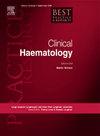内源性和外源性细胞因子:概述和介绍
IF 2
4区 医学
Q3 HEMATOLOGY
引用次数: 0
摘要
细胞因子是普遍存在的小蛋白质,几乎由所有白细胞和其他免疫效应细胞分泌,与其他细胞因子、效应细胞和调节细胞相互作用,指导先天和适应性免疫。已经描述了六大类细胞因子,其功能范围从白细胞产生的细胞因子(白细胞介素)刺激免疫和炎症到影响免疫效应细胞向炎症和组织损伤部位的迁移(趋化因子)。当分泌过量,或当促炎和抗炎细胞因子之间存在不平衡时,从败血症到器官移植排斥反应到自身免疫性疾病都会发生。用于治疗的外源性细胞因子的开发,与自然产生的细胞因子相似或相同,导致了癌症和自身免疫性疾病管理方面的进展。另一方面,细胞因子抑制剂的发展已经导致控制越来越多的炎症、肿瘤、自身免疫和过敏条件的能力。未来的研究应继续探索细胞因子被用于治疗目的的方式或被用作抑制剂来中断疾病的病理生物学机制。本文章由计算机程序翻译,如有差异,请以英文原文为准。
Endogenous and exogenous cytokines: An overview and introduction
Cytokines are ubiquitous small proteins, secreted by virtually all leukocytes and other immune effector cells, that interact with other cytokines and effector and regulatory cells to direct innate and adaptive immunity. Six broad categories of cytokines have been described, with functions ranging from stimulation of immunity and inflammation by cytokines produced by white blood cells (interleukins) to impacting the migration of immune effector cells to sites of inflammation and tissue injury (chemokines). When secreted in excess, or when there exists an imbalance between proinflammatory and anti-inflammatory cytokines, diseases ranging from sepsis to organ transplant rejection to autoimmune disorders occur. The development of exogenous cytokines for therapeutic use, similar or identical to naturally occurring cytokines, has resulted in advances in the management of cancer and autoimmune diseases. On the other hand, the development of inhibitors of cytokines has resulted in the ability to control of a growing list of inflammatory, neoplastic, autoimmune, and allergic conditions. Future investigations should continue to explore the manner cytokines are exploited for therapeutic purpose or are used as inhibitors to interrupt the pathobiological mechanisms of disease.
求助全文
通过发布文献求助,成功后即可免费获取论文全文。
去求助
来源期刊
CiteScore
4.20
自引率
0.00%
发文量
42
审稿时长
35 days
期刊介绍:
Best Practice & Research Clinical Haematology publishes review articles integrating the results from the latest original research articles into practical, evidence-based review articles. These articles seek to address the key clinical issues of diagnosis, treatment and patient management. Each issue follows a problem-orientated approach which focuses on the key questions to be addressed, clearly defining what is known and not known, covering the spectrum of clinical and laboratory haematological practice and research. Although most reviews are invited, the Editor welcomes suggestions from potential authors.

 求助内容:
求助内容: 应助结果提醒方式:
应助结果提醒方式:


